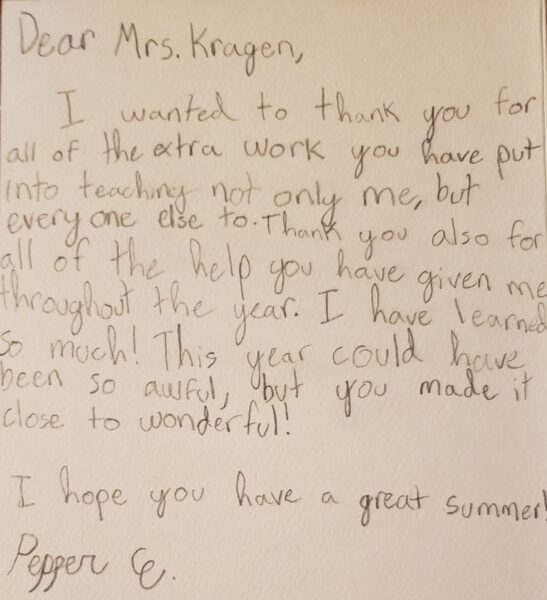Every year, in one of my first class meetings, I ask my students, “How many of you have trouble sleeping?”
Every year nearly every hand goes up.
I explain that for Highly Capable students, that’s characteristic. For them, the overwhelming issue is that they have trouble turning off their brains.
That gets a positive response! Lots of vigorous nods and thumbs held way up.
“Me too,” I say. “So let me share some tips I’ve learned over the years to help with falling asleep.”

- Follow the same routine every night.
- No screen time for an hour before bed. That’s no phone, no tablet, no TV, no nothing.
- A bath can help. “I like to take a book with me and read in the bathtub before I go to bed. That can help me relax and get me ready to fall asleep.”
- “Some people suggest a glass of warm milk. Some people suggest a small serving of carbohydrates. If I’m having a hard time falling asleep, sometimes I get up and have a little bowl of cereal. That can help me.”
Eventually, I turn to the class and let them add their own suggestions:
- I sleep better with my cat snuggled next to me. I responded, “If your parent lets you have one, a comfort animal can help.”
- I sleep better with my stuffy. “You’re right. A stuffed animal can be a good substitute for a comfort animal.”
- My parents give me gummies with something in them to help me sleep. “I’m going to guess that’s melatonin. The human brain naturally produces melatonin to help you sleep. Some people produce more than others.” Then I laugh. “My doctor says my brain hardly produces any. I hope your parents talked to your doctor about that. Doctors don’t just want to know about the medicines you take. They want to know about supplements too.”
- I have an app on my phone that plays the sound of the ocean. That helps me sleep. “And there are lots of sounds to choose from. In addition to the sound of the ocean you can get the sound of rain or running water or calming music or even the sound of a fan.”
- That’s what I do! I have a small fan by my computer. I turn it on, and it helps me sleep. “That’s called white noise. It helps drown out other sounds that might keep you awake.”
- If I keep thinking of things I need to do, I get up and write them down. “Me too! Just writing them down let’s my brain know I don’t have to deal with them right now—at 2 in the morning. I will deal with them when I get up. It helps shut off that panicky voice in my head.”
- I try to get all my homework done early so I’m not thinking about it. “Exactly! What a great idea!”




